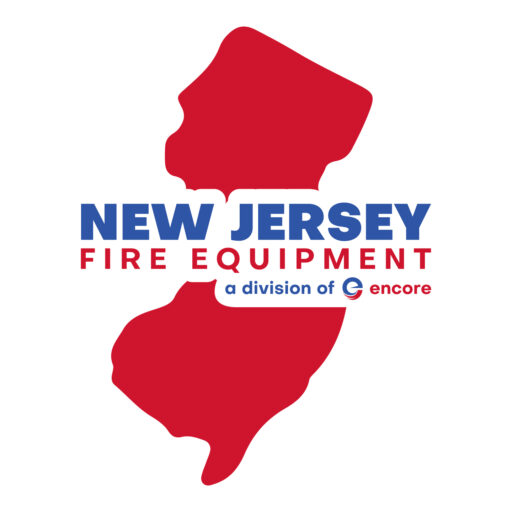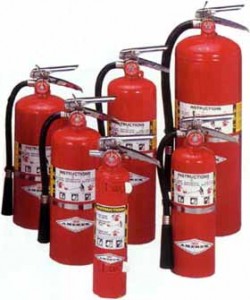 Powder based agent that extinguishes by separating the four parts of the fire tetrahedron. It prevents the chemical reaction between heat, fuel and oxygen and halts the production of fire sustaining “free-radicals”, thus extinguishing the fire.
Powder based agent that extinguishes by separating the four parts of the fire tetrahedron. It prevents the chemical reaction between heat, fuel and oxygen and halts the production of fire sustaining “free-radicals”, thus extinguishing the fire.
- Ammonium phosphate, also known as “tri-class”, “multipurpose” or “ABC” dry chemical, used on class A, B, and C fires. It receives its class A rating from the agent’s ability to melt and flow at 177 °C (350 °F) to smother the fire. More corrosive than other dry chemical agents. Pale yellow in color.
- Sodium bicarbonate, “regular” or “ordinary” used on class B and C fires, was the first of the dry chemical agents developed. It interrupts the fire’s chemical reaction, and was very common in commercial kitchens before the advent of wet chemical agents, but now is falling out of favor, as it is much less effective than wet chemical agents for class K fires, less effective than Purple-K for class B fires, and is ineffective on class A fires. White or blue in color.
- Potassium bicarbonate (aka Purple-K), used on class B and C fires. About two times as effective on class B fires as sodium bicarbonate, it is the preferred dry chemical agent of the oil and gas industry. The only dry chemical agent certified for use in ARFF by the NFPA. Violet in color.
- Potassium bicarbonate & Urea Complex (aka Monnex), used on Class B and C fires. More effective than all other powders due to its ability to decrepitate (where the powder breaks up into smaller particles) in the flame zone creating a larger surface area for free radical inhibition.
- Potassium Chloride, or Super-K dry chemical was developed in an effort to create a high efficiency, protein-foam compatible dry chemical. Developed in the 60s, prior to Purple-K, it was never as popular as other agents since being a salt, it was quite corrosive. For B and C fires, white in color.
- Foam-Compatible, which is a sodium bicarbonate (BC) based dry chemical, was developed for use with protein foams for fighting class B fires. Most dry chemicals contain metal stearates to waterproof them, but these will tend to destroy the foam blanket created by protein (animal) based foams. Foam compatible type uses silicone as a waterproofing agent, which does not harm foam. Effectiveness is identical to regular dry chemical, and it is light green in color (some ANSUL brand formulations are blue). This agent is generally no longer used since most modern dry chemicals are considered compatible with synthetic foams such as AFFF.
- MET-L-KYL is a specialty variation of sodium bicarbonate for fighting pyrophoric liquid fires (ignite on contact with air). In addition to sodium bicarbonate, it also contains silica gel particles. The sodium bicarbonate interrupts the chain reaction of the fuel and the silica soaks up any unburned fuel, preventing contact with air. It is effective on other class B fuels as well. Blue/Red in color.

